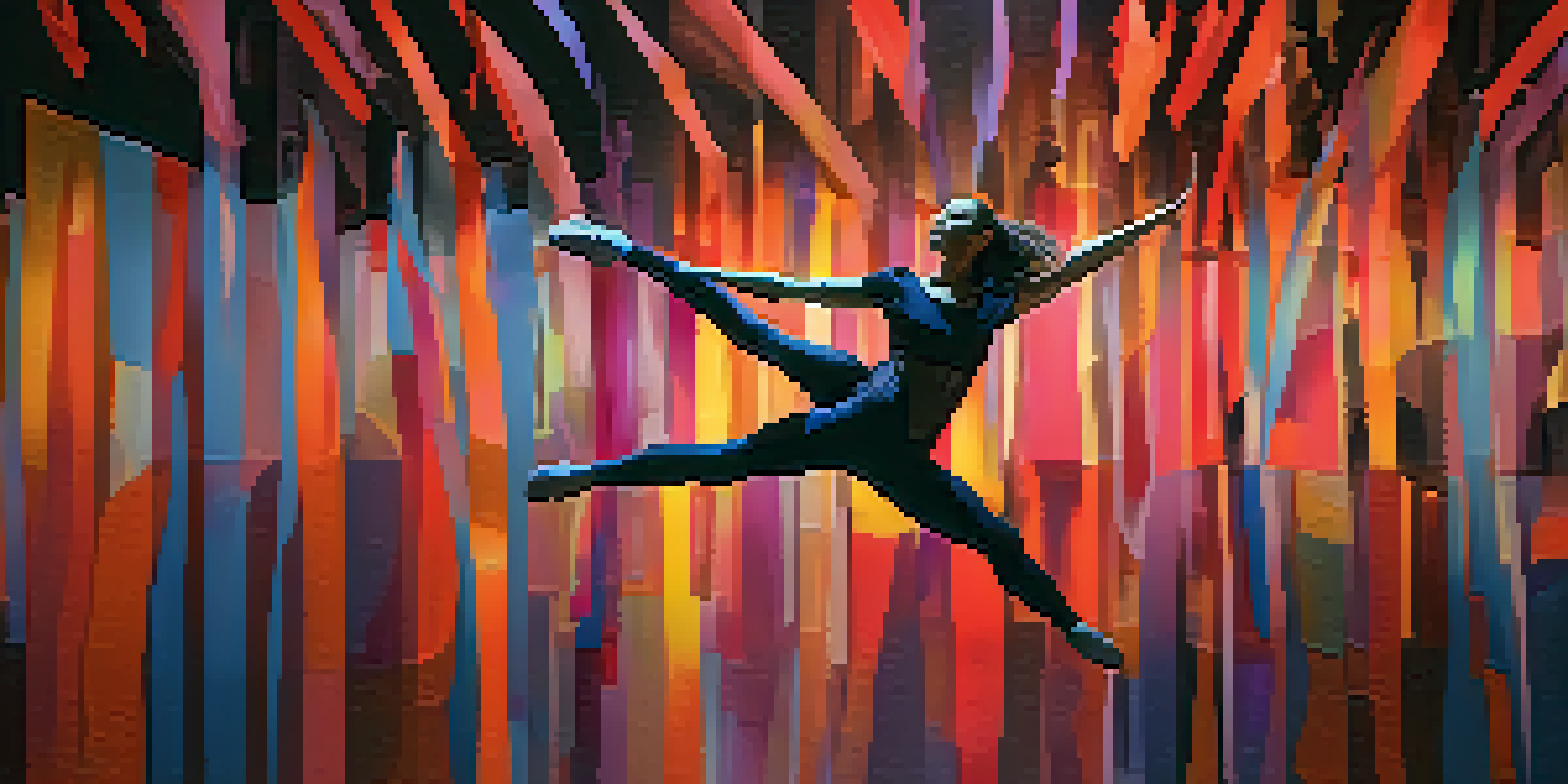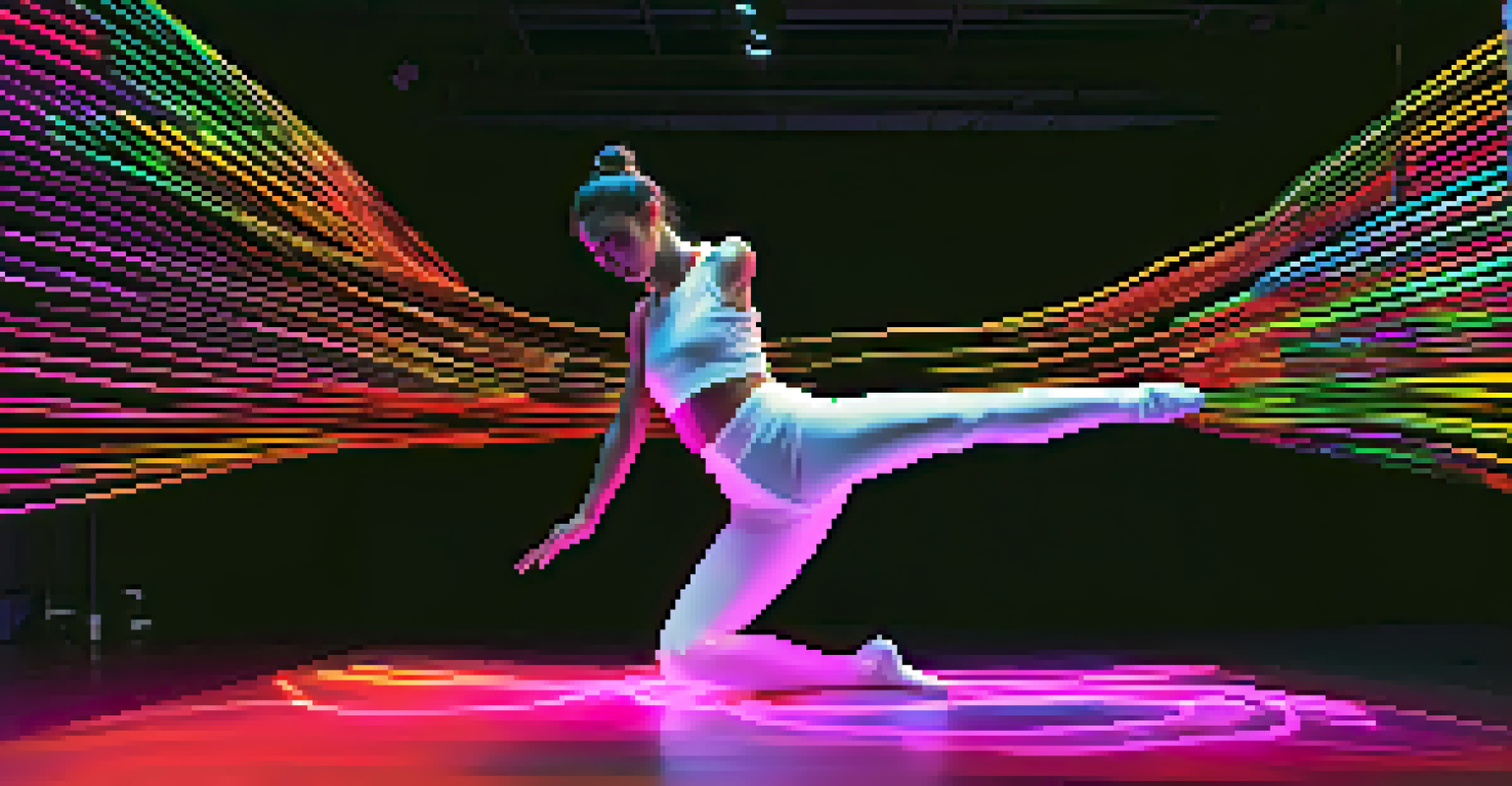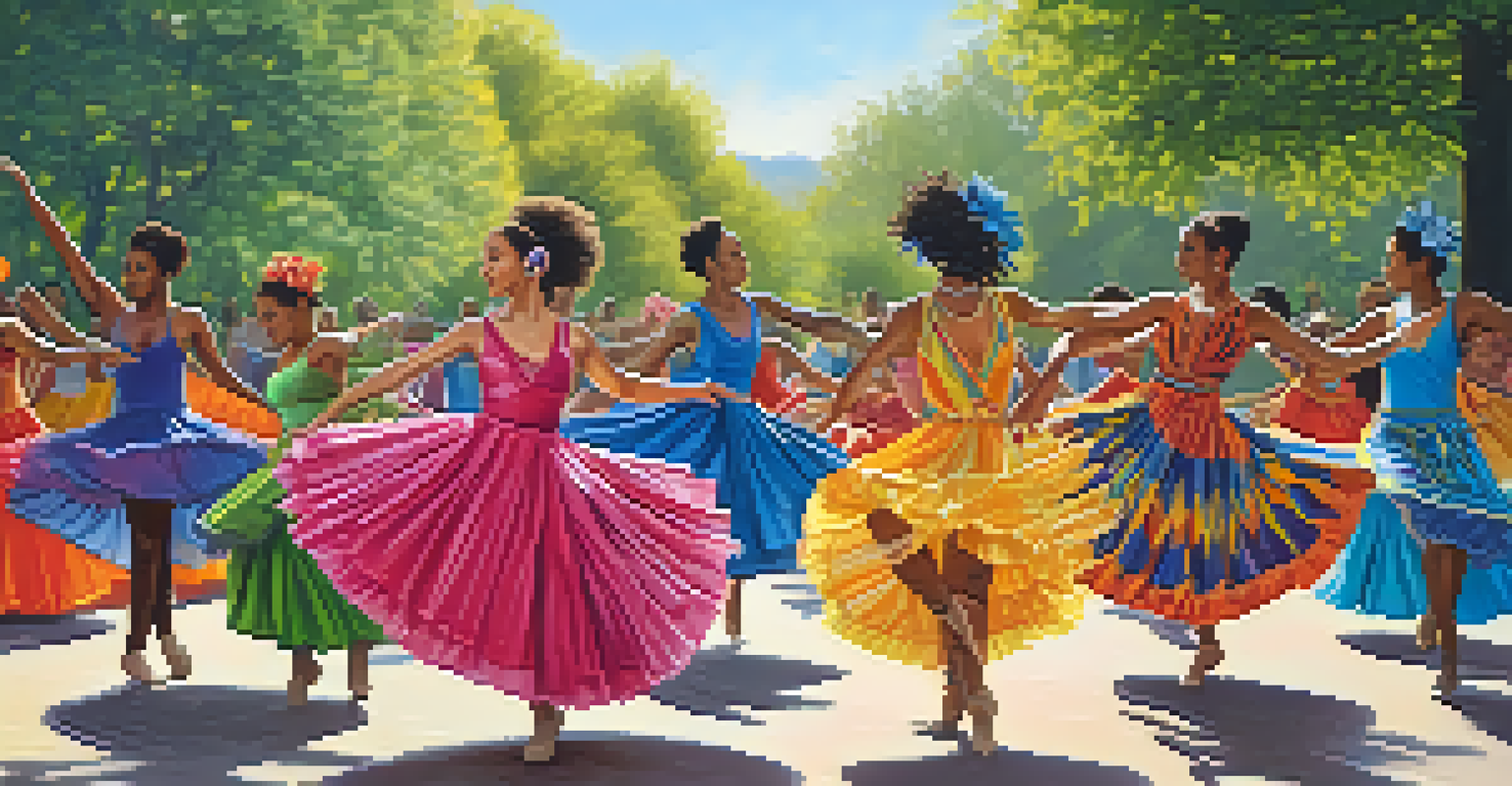The Influence of Dance on Performance Art: A Deep Dive

Understanding Performance Art and Its Components
Performance art is a unique blend of various art forms, often incorporating elements like theater, music, and dance. It emphasizes the artist's body as a medium for expression, allowing for a deep connection with the audience. By merging different disciplines, performance art transcends traditional boundaries, making it an exciting and dynamic field.
Dance is the hidden language of the soul.
At its core, performance art often explores themes of identity, society, and emotion, engaging viewers in a thought-provoking dialogue. Dance, as a crucial component, brings movement and physicality to these themes, adding layers of meaning and emotional depth. This fusion encourages artists to push creative limits and challenge conventional perceptions.
Moreover, the ephemeral nature of performance art means that each presentation is a unique experience. This fluidity invites experimentation, where dance can dramatically alter the interpretation of a piece. The interplay between movement and performance art creates an engaging spectacle that resonates with diverse audiences.
The Historical Relationship Between Dance and Performance Art
Historically, dance and performance art share a rich and intertwined legacy. In the early 20th century, artists began to experiment with incorporating dance into their performances, revolutionizing the art scene. Pioneers like Martha Graham and Merce Cunningham laid the groundwork for contemporary performance art by merging dance with other artistic expressions.

As performance art evolved, so did the role of dance within it. Artists started using movement not just as a physical expression but as a narrative device that could convey complex emotions and stories. This evolution highlighted how dance could serve as both an aesthetic and thematic element, enriching the overall performance.
Dance Enhances Performance Art
The integration of dance techniques adds emotional depth and narrative richness to performance art.
Key movements such as Dadaism and Surrealism also influenced this relationship, as they embraced spontaneity and absurdity. Dance became a means of exploring these ideas, often leading to performances that defy logic yet inspire profound reflection. This historical context sets the stage for understanding the ongoing influence of dance in contemporary performance art.
Dance Techniques That Enhance Performance Art
Various dance techniques play a pivotal role in shaping performance art, each bringing its unique flavor. For instance, contemporary dance emphasizes freedom of movement and improvisation, allowing performers to express raw emotions and personal narratives. This technique fosters a deeper connection between the artist and the audience, as spontaneity often leads to unexpected moments of beauty.
Art is not freedom from discipline, but disciplined freedom.
Conversely, classical dance styles like ballet provide a structured foundation that can elevate the visual aspect of performance art. The elegance and precision of ballet can create a striking contrast when juxtaposed with more chaotic or abstract elements in a performance. This blend of structure and freedom invites viewers to appreciate the nuances of both forms.
Moreover, incorporating cultural dance forms adds another layer of richness to performance art. By integrating traditional movements and storytelling, artists can celebrate diversity and share unique cultural narratives. This fusion not only broadens the appeal of performance art but also promotes dialogue and understanding among different communities.
The Role of Emotion and Expression in Dance and Performance Art
One of the most powerful aspects of both dance and performance art is their ability to convey emotion without words. Dance allows artists to express feelings such as joy, sorrow, and anger through movement, creating an immediate connection with the audience. This non-verbal communication can often resonate more deeply than spoken language, making it a vital component of performance art.
Furthermore, the physicality of dance can amplify the emotional impact of a performance. When dancers embody their feelings through their movements, it creates a visceral experience for viewers. This emotional authenticity invites the audience to reflect on their own experiences, fostering a shared understanding and connection.
Historical Ties Between Art Forms
Dance and performance art share a rich history, with early 20th-century pioneers revolutionizing the art scene.
In performance art, the integration of dance as an emotional vehicle often enhances the overall narrative. By blending movement with other artistic elements, artists can create a multi-dimensional experience that evokes empathy and introspection. This synergy between dance and emotion is what makes performance art a profound and transformative experience.
How Dance Influences Choreography in Performance Art
Choreography is the backbone of any performance that involves movement, and dance significantly influences its creation. In performance art, choreography often serves as a framework that guides the flow of the piece while allowing for creativity and spontaneity. This balance ensures that the performers can engage with the audience in real-time, adapting their movements as the performance unfolds.
Additionally, dance-based choreography encourages collaboration among artists from various disciplines. For example, a choreographer might work alongside visual artists, musicians, and actors to create a cohesive performance. This collaborative approach enriches the creative process, leading to innovative performances that challenge traditional formats.
Moreover, the choreography in performance art often reflects contemporary societal issues, making it relevant and relatable. By using dance to comment on social themes, artists can inspire change and provoke thought among their audiences. This blend of choreography and social commentary highlights the transformative power of dance within the realm of performance art.
The Impact of Technology on Dance and Performance Art
In today's digital age, technology has profoundly influenced the landscape of dance and performance art. From video projections to interactive installations, artists are using technology to enhance their storytelling and create immersive experiences. This integration allows for a new dimension of creativity, where movement and technology seamlessly interact.
For instance, augmented reality can transform a traditional dance performance into a multi-sensory experience, engaging audiences in unprecedented ways. By combining live performance with digital elements, artists can create enchanting visuals that amplify the emotional impact of their work. This innovative use of technology opens up exciting possibilities for experimentation and expression.
Technology Transforms Art Experiences
The use of technology in performance art creates immersive experiences that engage audiences in new ways.
Moreover, social media platforms have revolutionized how performance art is shared and experienced. Artists can reach a global audience, sharing their work and connecting with diverse communities. This visibility not only promotes their art but also fosters a dialogue about the evolving nature of performance art and its relationship with dance in the modern world.
Future Trends in Dance and Performance Art
As we look ahead, the future of dance and performance art promises to be vibrant and transformative. One emerging trend is the emphasis on inclusivity and representation, with artists striving to showcase diverse voices and perspectives. This shift is vital for creating a more equitable art world and enriching the narratives explored within performance art.
Additionally, the blending of genres is becoming increasingly popular, with artists drawing from various disciplines to create unique experiences. This cross-pollination of ideas allows for innovative approaches to choreography, leading to performances that defy categorization. As a result, audiences can expect more experimental and boundary-pushing works in the coming years.

Finally, the ongoing integration of technology will continue to shape the future of dance and performance art. Artists will likely explore new tools and mediums to enhance their storytelling, creating immersive experiences that captivate audiences. As these trends evolve, they will undoubtedly lead to exciting developments in the relationship between dance and performance art.